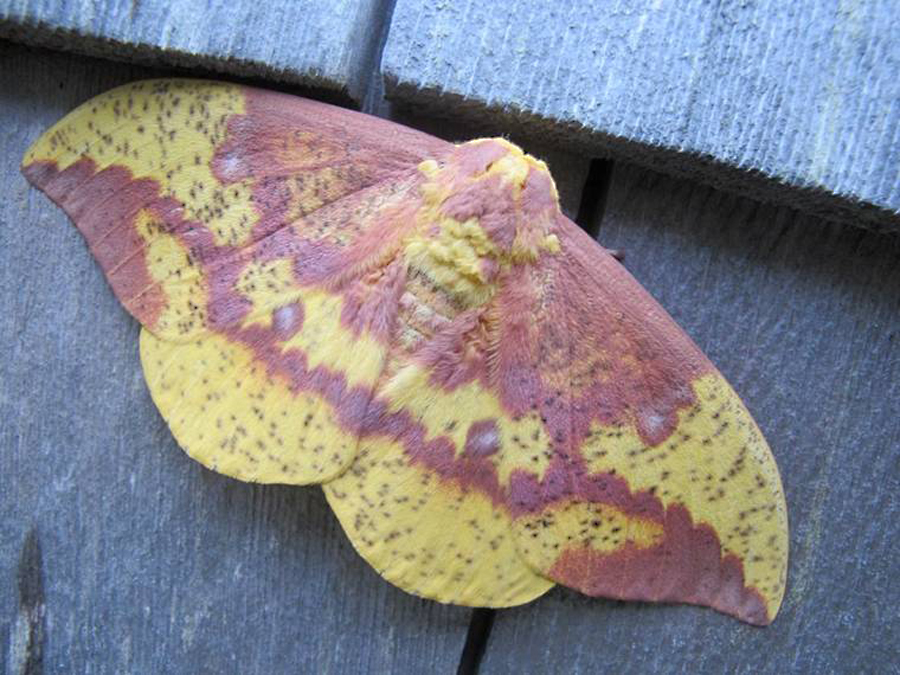Martha’s Vineyard is a great place to make your last stand.
We have almost everything that one would need — food, water, space and shelter. But if you are an insect, the best thing that the Island has going for it is what didn’t happen here — widespread DDT spraying and the introduction of a predatory parasitoid fly.
DDT, as you may remember, is a pesticide that was used heavily from the late 1940s until it was banned in 1972. Over 675,000 tons of this chemical were applied to lands across the United States as an agricultural pesticide and for mosquito control.
On the Vineyard, however, DDT spraying only occurred on a very limited basis. In research completed by entomologist Paul Goldstein, it is noted that only 17,000 of the Vineyard’s 64,000 acres were sprayed. And the spraying happened only once.
This is great news for the Island’s insects. One in particular has found a refuge of last resort on our little Island.
The imperial moth still lives on Martha’s Vineyard. This moth, though once common along the entire East Coast, has been almost completely extirpated in New England. The Island’s imperial moth inhabitants are the last remaining New England population of this insect, although it can still be found in the southern U.S.
In fact, it is somewhat common to see the imperial moth on Island, though impossible to find elsewhere in New England. The other reason that the Imperial moth still thrives here is due to the absence of a parasitoid fly that was introduced off-Island to combat gypsy moth infestations and parasitized the imperial moth caterpillars too.
The last explanation for the presence of Imperial moths on Martha’s Vineyard is that we don’t have many metal halide street lamps. This type of light draws moths in and keeps them hanging around until after sunrise when they will be breakfast for the early birds.
The imperial moth is a large and striking member of the giant silk worm moth, or Saturniidae family which includes cecropia, io, and luna moths. These moths are notable for their large-sized wings (up to six inches), small heads, and bodies covered with hair.
Though many giant silkworm moths create silken cocoons, the imperial moth pupates naked (as in, the Emperor has no clothes). Its bulky brown pupa can be two inches long and will metamorphose under the ground in soil over the winter. The size of the pupa is not surprising when you consider the magnitude of the imperial moth caterpillar. This caterpillar can be three inches or more and may reach the thickness of a cigar!
Two imperial moth caterpillar color morphs are possible, a lime green or brown with eyespots along its hairy body. These colossal caterpillars are both tough to miss and exciting to see. Raccoons try not to miss them either, and are known to eat these bulky bits.
The imperial moth emerges from its pupa in the spring. These flyers are the large, gorgeous yellow and pink/purple moths that are seen fluttering at the porch light and clinging to the lit shingles. As adults, Imperial moths do not need to eat. They have done much munching as caterpillars, devouring their favorite edible, pine needles, and leaving large droppings, called frass, behind.
As the summer fades into the sunset, so do the imperial moths, which will perish before the frost comes. Their future progeny are down below, snuggled in the warmth of their earthy surroundings, waiting to emerge next spring.
They might already be down there, planning their return to our Island resort, which is also, sadly, their last resort for survival in New England.
Suzan Bellincampi is director of the Felix Neck Wildlife Sanctuary in Edgartown.





Comments
Comment policy »